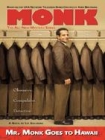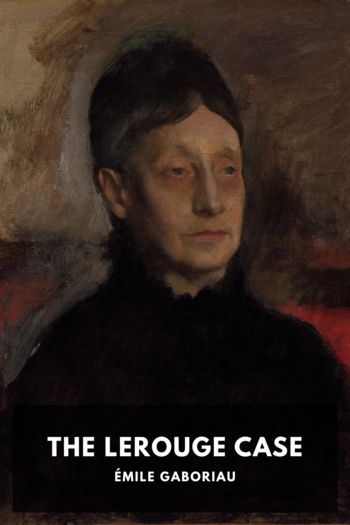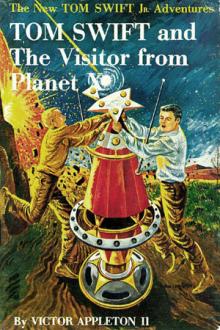Mr. Monk Goes to Hawaii, Goldberg, Lee [namjoon book recommendations .TXT] 📗

Book online «Mr. Monk Goes to Hawaii, Goldberg, Lee [namjoon book recommendations .TXT] 📗». Author Goldberg, Lee
Kealoha squatted beside the tree, examined the place where Monk said the coconut had been, then waved over the crime scene photographer.
“Aikane, make some snaps of dis. Tanks, eh?”
“The killer came in through the same gate we did, picked up the coconut, and sneaked up behind her inside the house,” Monk said.
“In da house?” Kealoha said, standing up. “How you figga?”
“She’s not wearing any suntan lotion. The book on the chaise longue is a large-print edition, so she obviously needs reading glasses. So where are they? The killer put out all these props and he did it in a hurry. Who found her?”
“Da maids,” Kealoha said.
“When?”
“An hour or so.”
Monk squinted up at the sun, looked at the hot tub again, then went into the house. We followed him. The bungalow had an open floor plan, the kitchen open to the living room, which was open to the patio. Only the bedrooms had doors. The high-pitched ceiling had exposed beams, the fans mounted on them spinning hard in a futile effort to circulate the cool, conditioned air around the house before it escaped outside.
Monk took a napkin off the marble counter in the kitchen and opened the refrigerator. It was empty. He opened several of the cupboards, which were full of dishes, pots, and pans that looked as if they’d never been used. He leaned into the sink and peered into the drain.
“She was killed here,” Monk said.
“How you know dat?”
“The victim has a slight horizontal bruise right below her collarbone,” Monk said. “Based on her height, that’s exactly where she would have hit the counter when she fell forward.”
“You could be mistaken,” Kealoha said, dumbfounded. So dumbfounded, in fact, that he was speaking perfect English.
Monk shook his head. “No, I couldn’t.”
Kealoha looked at me.
I nodded. “If Mr. Monk says it’s murder, it is. Ask Capt. Leland Stottlemeyer on the SFPD; he’ll tell you the same thing.”
“I know this may seem like a strange accident to you, but that’s the nature of island life. These kinds of things happen here all the time,” Kealoha said. “Murders don’t.”
“They do now,” Monk said.
Kealoha sighed, took a notepad out of his back pocket, and scribbled something on a page. He motioned to the uniformed officer.
“Kimo, call in some more officers. This is a crime scene; I want it secured until SID can get here, eh? Find Dr. Aki; tell him we got a body that needs cuttin.’”
“He’s fishing today, brah,” the officer said.
“Ka den, call the coast guard, tell ’em to bring him in, yeah?” Kealoha tore the page out of his pad and gave it to the officer. “Here’s my contact over there.”
The officer went outside to make his calls. Monk folded the napkin he was using and put it in his pocket.
“You’ve slipped out of character,” Monk said.
“You mean da pidgin stuff?” Kealoha said. “The haole like their Hawaiians to be Hawaiian, so I do my part. It’s good for tourism and blows off people I no wanna to talk to anyways.”
I looked at Monk. “Why don’t you tell Lieutenant Kealoha who killed Mrs. Gruber and let’s go. It’s noon and I’d really like to get to the beach today, take a swim, and try one of those tropical drinks stuffed with fruit and tiny umbrellas.”
“I don’t know who killed her yet.”
“Yet?” Kealoha said.
“But I will,” Monk said. “I’m on the case.”
I was afraid of that, though he was only confirming what I knew was true the moment he peeked through the hedge. Monk wouldn’t rest until the murder was solved, which meant, by extension, that neither would I.
Some vacation, huh?
“Let’s grab a plate and talk story. I’ll tell you everything I know about the dead lady,” Kealoha said.
“A plate?” Monk asked.
“Lunch,” Kealoha said, striding out of the house.
We piled into Kealoha’s Crown Victoria, the standard transportation for cops everywhere, and he drove us a couple of miles inland to Koloa and what remained of the first sugar-plantation town in the islands. On the way he told us that Helen Gruber came from Cleveland, where her late first husband made his fortune in the paving business. She recently married Lance Vaughan, who’d been her personal trainer and was about thirty years younger than her.
Good for her, I thought. If rich men can have trophy wives, why can’t wealthy widows have their boy toys?
Frontier-style wooden storefronts lined one side of Koloa Road; on the other were the ruins of the old sugar mill. The storefronts looked as if they hadn’t changed much since the 1830s, except now they were selling eight-dollar scoops of ice cream and sixty-dollar T-shirts to tourists instead of taro and supplies to the fieldworkers.
We parked in front of an old cabin at the far end of the road, on the edge of a field of tall weeds and neglected sugarcane. There was a peeling sign out front that announced the place as Cokie’s Grill. The restaurant had a sagging porch, screened windows, and a rusted corrugated-metal roof covered in green moss.
We got out, scattering a group of roosters that sought refuge under the porch and clucked at us. Monk stared at them as if they were alligators.
“What is this place?” Monk asked.
Kealoha stepped up onto the porch. “This was a camp house for the sugar-plantation workers. It’s hardly changed, yeah?”
“It should be condemned,” Monk said. “Why are we here?”
“Fo da boss grines,” Kealoha said, opening the rickety screen door and ushering us in. “Best plate lunch on Kauai.”
Monk turned to me, the color draining from his face. “Wipe.”
I reached into my purse and handed him one as we went in.
The cramped little cabin still felt more like a home than a restaurant, though the smell of fried food and fish was everywhere. The white walls were peeling and yellowed with age and the hardwood floors creaked under our feet with each step.
There were just four tables





Comments (0)